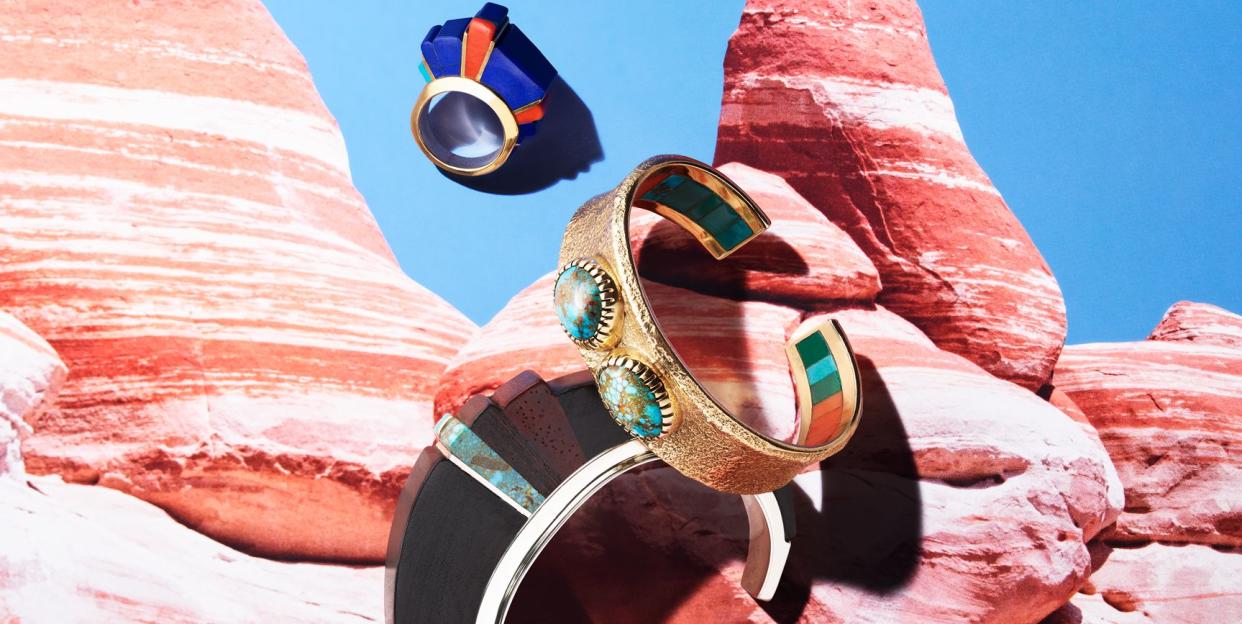How to Start Collecting Native American Jewelry

- Oops!Something went wrong.Please try again later.
A bad breakup with Clark Gable brought Millicent Rogers to Taos, New Mexico, in 1947. There, the Standard Oil heiress found more than just solace. She discovered a rich Native American culture that would inspire her to become a passionate champion for indigenous rights and a prolific collector of Navajo, Zuni, and Hopi jewelry. Layers of turquoise and silver, paired with Charles James couture, became her signature—her trove was so vast a museum was created to hold it all after her death in 1953.
If Rogers popularized the craft of Southwestern tribes among her high society set, the late Hopi designer Charles Loloma brought it global acclaim. “He revolutionized jewelrymaking in the 1960s and is perhaps the single most collectible Native American jeweler of all time,” says Mahnaz Ispahani Bartos, a founder and president of Mahnaz Collection, a design and jewelry gallery in New York.
Loloma expanded the vernacular beyond turquoise and silver, introducing materials like lapis lazuli and 18K gold, and he used his training in pottery to play with dimension and height. His sculptural work was shown in Paris and commissioned by first ladies to give their foreign counterparts, but Loloma “was always a Hopi deeply rooted in his land,” Ispahani Bartos says. “He never abandoned his traditional practices and rituals.”
He passed the torch to his niece and protégée Verma Nequatewa, who launched her own line, Sonwai, in 1989. Like her uncle, Nequatewa uses stones including coral, sugilite, and lapis with fossilized ivory and wood, and she finds inspiration in her world, whether it’s the rock formations on the Hopi reservation or the ceremonies held in her village. “There is a lot of energy around us,” she says. “We should never forget where we are from.”
Now, thanks to social media, jewelers from Maine to Montana are finally getting their work seen, introducing collectors to a diverse array of styles and traditions—and reminding them that the popular turquoise-laden aesthetic of the Southwest is but one type of Native American expression. “There are more than 500 nations in this country,” says Keri Ataumbi, a Santa Fe–based jewelry designer of Kiowa origin. “Every one of them has a distinct visual language.”
It’s on collectors to buy Native-made designs from trusted sources, such as the Santa Fe Indian Market (held every August) and reputable galleries like NYC’s Mahnaz Collection, the Heard Museum in Phoenix, and members of the Authentic Tribal Art Dealers Association.
Above: Mahnaz Collection Charles Loloma ring ($26,500) and gold cuff; Sonwai cuff ($10,800). Styled by Mariana Vera.
You Might Also Like

